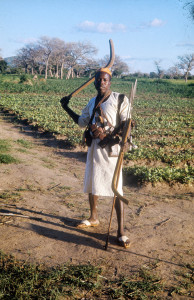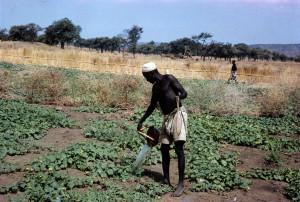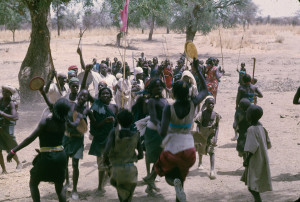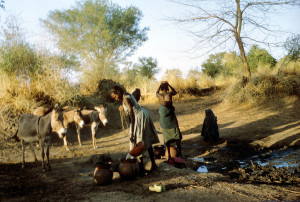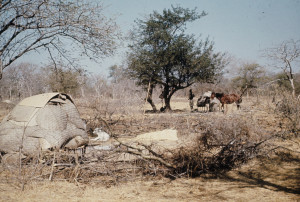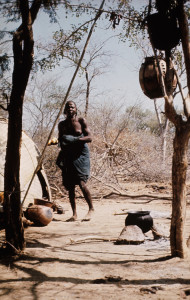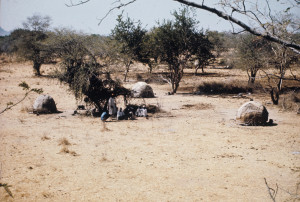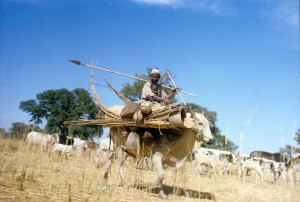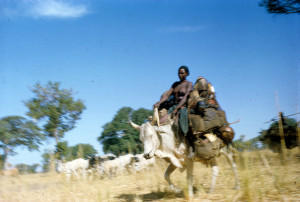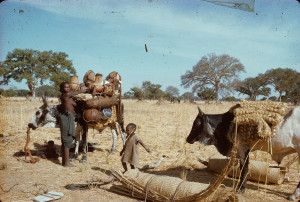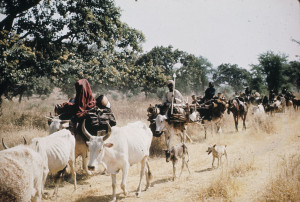A Fur farmer with his throwing stick (Fur: “dolfa”, Arabic: “sofrog”) and his spears (Fur: “Kor”, Arabic: “harba”) in front of his sweet potato (Fur: “bambai”, Arabic: “bambai”) field.
Note that the acasia albida (Fur: “kurul”, Arabic: “haraz”) trees shed the leaves in the rainy season.
Wadi Azum area, Western Darfur.
Photo: Gunnar Haaland, 1965
